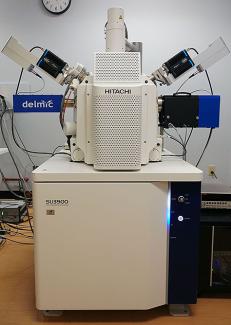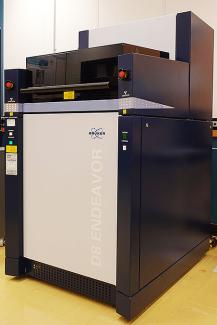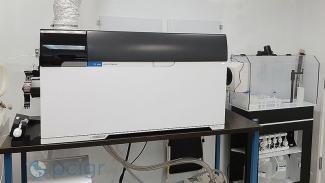PCIGR and the Mineral Deposit Research Unit (MDRU) at UBC Earth, Ocean and Atmospheric Sciences (EOAS) are pleased to introduce three new analytical instruments for critical minerals research. The data we collect from these instruments are assisting the mineral exploration industry in unlocking British Columbia’s critical minerals supply, such as copper.
We gratefully acknowledge Pacific Economic Development Canada (PacifiCan) for their funding contribution, and Hitachi High-Tech America, Bruker AXS and Agilent Canada for installing the new systems.

| 
| 
|
The Hitachi SU3900 scanning electron microscope (SEM) is used for high-magnification and high-resolution imaging of intact samples, including cathodoluminescence imaging of zircon grains for geochronology, and elemental mapping with energy-dispersive X-ray spectroscopy (EDS). These data complement geochronology data from chemical abrasion thermal ionization mass spectrometry (TIMS) obtained on PCIGR’s existing Nu Instruments TIMS.
We use the Bruker D8 Endeavor X-ray diffractometer (XRD) to identify indicator minerals from powdered samples to characterize the bulk composition of the rocks that may host economic deposits. Both the XRD and then SEM are installed at EOAS’s Electron Microbeam & X-ray Diffraction Facility (EMXDF).
The Agilent 8900 triple-quadrupole inductively coupled plasma mass spectrometer (ICP-MS) at PCIGR collects trace element concentration data from intact samples (via laser ablation) and samples dissolved into solution. High-precision trace elemental data reveal the specific geochemistry of rocks and minerals of interest.
Contact us if you have a critical minerals project or other projects that we can help with. We look forward to working with you.
Learn about our critical minerals research: https://pcigr.ubc.ca/news-and-blogs/news/january-01-2024/ubc-receives-over-23m-funding-contribution-pacifican-critical
Updated February 2025: Watch our YouTube video.
PacifiCan is committed to partnerships that drive innovation and economic growth. By investing in the sustainable development of the critical minerals that will be key in developing the clean technologies of tomorrow, PacifiCan is building on B.C.’s reputation as a clean energy leader and propelling B.C. forward.
PCIGR is a UBC Shared Research Platform that is dedicated to excellence and innovation in geochemistry. Welcoming researchers from academia, government and industry since 2002, PCIGR provides exceptional, high-precision, low-level isotopic and geochemical analytical services through advanced instrumentation.
MDRU is a collaborative joint-venture between UBC and the mineral industry. Established in 1989, MDRU is one of the most successful integrated mineral deposit and exploration research groups in the world, delivering industry-applicable results and providing lab services to industry members.
EMXDF is a consortium of analytical laboratories that specializes in advanced imaging and chemical determinations of rocks, minerals and other materials. The facility has served students, researchers and industry for over 30 years.